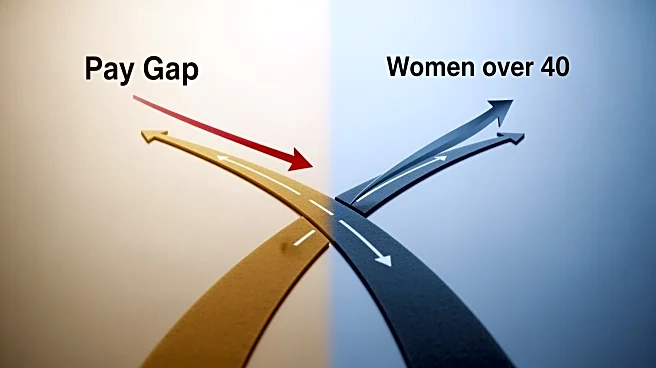What's Happening?
Recent data from the Office for National Statistics indicates that the gender pay gap among full-time employees in the UK has decreased to 6.9% in April 2025, down from 7.1% the previous year. This marks
a significant reduction over the past decade. However, the gap has widened for women aged 40 to 49, increasing to 9.1% from 8.9% in 2024. Experts attribute this disparity to the 'motherhood penalty,' where working mothers face challenges in returning to full-time work due to childcare responsibilities. Melissa Blissett from Barnett Waddingham highlights that many mid-life women are caught between caring for children and parents, limiting their ability to work full-time. The cost and availability of childcare further exacerbate this issue, leading some women to opt out of the workforce.
Why It's Important?
The widening gender pay gap for women over 40 underscores persistent inequalities in the workplace, particularly affecting those with caregiving responsibilities. This demographic faces unique challenges that impact their financial stability and career progression. Addressing these disparities is crucial for achieving gender equality in the workforce. Initiatives such as enhanced paid paternity leave and policies that support mothers returning to work could help mitigate these issues. Employers are encouraged to adopt practices that ensure mothers are not penalized in terms of career advancement, even if they work fewer hours. These measures could lead to a more equitable workplace and improve the overall financial wellbeing of women.
What's Next?
To address the gender pay gap for women over 40, experts suggest legislative changes requiring employers to report pay disparities by age. Such transparency could focus efforts on reducing these disparities. Additionally, employers are urged to consider pay strategies that include auto escalation and extended pension contributions during maternity leave. Job design should also be reimagined to accommodate part-time or shared roles, allowing women to take on greater responsibilities and be financially recognized. These steps could create a more inclusive work environment and support women's career advancement.
Beyond the Headlines
The gender pay gap for women over 40 highlights broader societal issues related to gender roles and caregiving responsibilities. It raises questions about the value placed on caregiving and the support systems available for working mothers. Addressing these issues requires a cultural shift towards recognizing and supporting the dual roles women often play as caregivers and professionals. Long-term solutions may involve rethinking workplace policies and societal norms to better accommodate the needs of working mothers.











